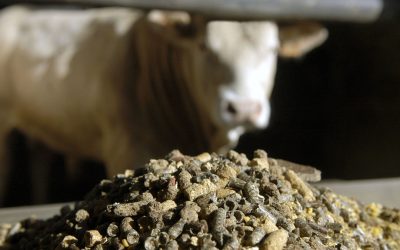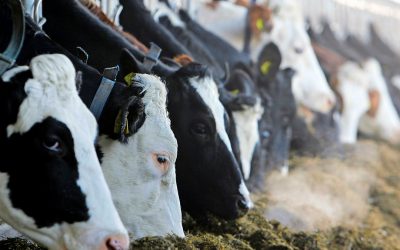The hidden potential of East Africa’s agriculture

“Give a man a fish and he will eat for a day. Teach a man to fish and he will eat for the rest of his life” is an old Chinese proverb – finance the fishing boat and things would move on even further. The encroaching famine on the north Kenyan, Somali and Ethiopian border is fighting for space in the western media against impending financial doom.
Poor farming methods, lack of infrastructure and negligence by local governments has meant that East Africa is pathetically equipped to deal with drought. The lack of irrigation, infrastructure, and farm inputs compounded by drought results in starvation. However the regions involved are also part of some of the fastest growing economies in the world. How is it that food security is still so poorly guarded?
African populace and GDP growth has been well documented. East Africa in particular is looking forward to strong economic development accompanied by an increasing population and literacy. Africa has the highest rate of people living in rural areas in the world but urban centres are attracting more people and the middle class is increasing.
The combination of population, urbanisation and GDP growth are common denominators to successful emerging markets which has seen per capita consumption drive forward throughout the BRIC’s. Kenya’s population has doubled over the last 25 years, to about 40 million people, and rapid population growth is set to continue. Kenya’s population will grow by around 1 million per year – 3,000 people every day – over the next 40 years and will reach about 85 million by 2050. The East African Community (EAC) represents a current population of 80 million all demanding an improvement of not just the quantity, but also the nutritional value of their food, i.e., increasing protein levels in diets.At a time of impending food crisis on the Somalia/Ethiopia/Kenya borders – figures are being released showing the sub-Saharan African demand for food is expected to reach US$100 billion by 2015, double the levels of 2000. Currently the sub-Saharan continent imports 45% of its rice and 85% of its wheat. Meanwhile in the urban hubs of Dar es Salaam, Kampala and Nairobi increasingly western diets demand quality meat, e.g. poultry, which in Nairobi is currently more expensive than beef. Kenya is home to a number of food and agricultural companies benefiting from increasing urban middle classes. Their business model is viable because they can serve a multi-million customer base, which has increased by 25% over the last 10 years and which continues to grow rapidly.
Improve efficiency
The industrialised meat industry is striding to improve its efficiency – coping with the local challenge of access to quality feedstuffs such as soybeans and maize. Feed additives in the form of vitamins and phytase are arriving but only in the industrialised commercial arena. Better performing genetic stock is being sourced from industry leaders such as Aviagen (poultry) and Genus (pigs, cattle). There is a growing awareness by food companies that these urban hubs are increasingly centres of a new wealthy middle class. Global companies are starting to wake up to Africa’s significance; Kentucky Fried Chicken, Coca Cola, Charoen Pokphand are all ‘casing the East African urban joint’. The critical challenge to unlocking the potential in the region is to improve basic food stuff production efficiencies. Too much of the regions basic commodity food stuffs such as maize and oilseeds are produced by inefficient subsistence farmers who are entirely at the mercy of the weather and only have access to inefficient farm inputs. Crop production in East Africa is constrained by a shortage of appropriate seeds. Research for appropriate maize, rice and wheat lines is under way at Syngenta, Pioneer and Monsanto. In the long term, seeds developed for the region with increased crop yields create a better food supply providing the farms are there to plant them. The region also struggles to produce soybeans due to the short day light hours in East Africa. Soybeans are the most efficient protein provider for livestock feeds and as such a critical cog in the food-production wheel. Work is being done to develop lines of soybeans which can cope with short day light hours.
Transfer potential
Industrialised farming and associated accompanying investments could transform Africa’s food security situation into a major exporter of commodities. A key to developing the agricultural production levels in East Africa is farm inputs; fertilisers, genetics (plant and animal) crop protection chemicals, infrastructure (irrigation, routes to market, etc). A similar progression as seen in the evolution of the Brazilian farming capability which led Brazil to become an agricultural powerhouse is needed in Africa. The critical factor which distinguishes East Africa from Brazil is the high density of small holders. Brazil’s cerrados were largely deserted – this is not the case in East Africa – a partnership between industrial food production which engages small holders is inevitable, however challenging.
Local governance constraints
Someone described agriculture in Africa to me as ‘heart-breaking’ and indeed the part about access to land and dealing with local authorities is exactly that. Teams of professional farmers with access to top seeds, fertiliser and crop protection method are being denied the opportunity to change Africa’s farming profile because of local governance.
Land ownership/leasehold is an emotive subject following a chequered history which has left behind a convoluted process compounded by corruption. There are examples where industries have evolved and flourished in Africa. Cut flowers in Kenya, cassava chips in Ghana, tilapia production in Malawi, coffee in Tanzania are examples of commercial agribusinesses. Within East Africa new dynamics between the trading community are showing signs of evolution. Kenya no longer has an abundance of good farm land with water, but does have a strong labour force and economy. Kenya is subsequently evolving into a processing centre, utilising its strong logistics capability that has been borne out of its coffee, tea and horticultural industries. Tanzania and Uganda, have the opportunity to become a production centre. Tanzania has been slow to realise its farming potential due to the inefficiencies of its land title process. Growing pressure from the World Bank will proactively encourage Tanzania to speed up the establishment of industrial farming. Given its endowments of land, climate and labour East Africa should have a strong comparative advantage in agriculture. The economy of this corner of Africa is buoyed by the offshore oil and gas exploration. UK operator BG Group made two discoveries in the Rovuma Basin off Tanzania’s southern coast in late 2010, which lifted the country’s proven gas reserves to 212.3bn cubic metres. Seventeen companies, including industry majors ExxonMobil, Statoil and Petrobras, are exploring 31 licensed blocks in Tanzania. Oil and gas has brought wealth to those nations fortunate to have discovered it – it will be the source of economic growth for East Africa.
Access to finance
The critical limiting factor to the development of farming in the region is access to financing. Despite the banking industry’s rapid growth in the region a pitiful amount of banks’ portfolios goes towards food and agribusiness. According to industry sources less than 5% of East Africa’s banking portfolios are represented by agriculture. In Tanzania agriculture represents less than 2% of banking portfolios.
Drawing more comparisons to the evolution of Brazilian agriculture – now a bread basket to the world; Brazilian growers are well financed not only by banks but also the major input suppliers and commodity processors. Growers can access capital to pay for their top notch farming inputs and machinery before planting – these loans are secured against the promise of resulting crops. In Africa such access to capital is not available prior to harvest; a grower can only access financing once his barn is full. So how is that farmer supposed to fill his barn if he can’t afford the seed to plant?
Across Africa small banks have been formed over the last two decades to focus on financing agriculture. Most of these entities failed, their exposure to small scale agriculture was too concentrated, all their eggs in many tiny uneconomical baskets with no collateral. Few of the projects they financed had the critical mass to make them viable. Agriculture is characterised as capital intensive with narrow margins – for these specialised banks agriculture was a fiscal drain.
So what kind of financing is happening in African Agriculture? Today donor backed funds such as AgDevCo are increasingly supporting small holder agriculture. The projects are small with a focus on impact rather than financial gains. The investments are often classed as ‘patient capital’. This money aims to support the development of small-holder farming enterprises and groups in targeted areas of Africa.
There are also purely charitable entities teaching subsistence farmers to be more market orientated such as Farm Africa. Both the patient capital funds and charity entities focus on commercialisation of small holder agriculture. It is not about “giving a man a fish so that he can eat for a day nor teaching a man to just fish for himself” – they are trying to teach the man to fish to feed himself, his family and then to sell a bulk to his local village. The question is can these small scale units really change the face of food security in Africa?
Bad image
Perhaps large scale farming has gotten itself a bad name – especially foreign backed projects. The label ‘Land Grab’ has certainly been pinned on Chinese, Middle East and Korean backed projects. Certainly African nations are dealing with an influx of Chinese interest; most of Tanzania’s roads have arrived at the courtesy of Chinese convicts. However it is industrialised farming which has the best potential to change Africa’s food security situation. Production per hectare will always be highest when top inputs/technologies and infrastructure/irrigation systems are available – and these happen with scale. Companies providing those inputs will be far more inclined to develop their ‘African offering’ if agriculture in the region is viable. A growing number of investment funds have woken up to the potential of African food production. It is a strong investment story – with such strong local demand, high commodity prices (e.g. rice prices in Africa are on average 20% above global trading prices) and abundant resources – if you can make good agriculture happen you are going to win. The rewards can be both monetary and humanitarian.
Commercial funds
The commercial investment funds developing industrialised agriculture in the region include SilverStreet Capital, Phatisa Group, African Agricultural Capital, Emergent, Africa Century and Lions Head Capital – to name but a few. These groups are striving to develop food production in the region at varying points in the supply chain. The projects have a combination of critical scale, good management and access to technology. These projects have the potential to not only win strong financial gains but also to make a relevant change in food supply across the region and beyond.
The basic dynamics of the East African area are extremely promising but concern regarding country risk – and in particular political risk remain foremost in investors’ minds. The higher the risk level the greater the prospective returns should be. Investors have stated that unless a project can deliver over 25% in return on investment then dealing with the ‘African risk’ is just not worth it. The East African economy has shown itself to be highly resilient to the factors which are shaking the west’s economic ground. 2009 saw major growth across the region whereas other emerging markets were struck down – e.g., Brazil and Russia. Trade flows between East Africa and Asia as well as the Gulf countries, underpins the sub-region’s solid growth.
Business ranking
In terms of the ‘Ease of doing Business’ – a ranking developed by the world bank – Eastern African countries are comparable to the other BRIC countries, with Kenya outperforming Brazil, Russia and India (Table 1 and 2). Africa risk is neither economic nor based on bureaucracy – Africa risk is basically referring to governance. Access to financing will ultimately make the leap to industrialised agriculture feasible in Africa. This requires the development of ‘faith in the system’ a key to winning foreign direct investment into food production. Debt availability is also key – the African banks are searching for ways to securitise their lending to food producers – much easier to do when dealing with large scale agricultural projects with clean land title and an asset base to include buildings and machinery – harder to do for half an acre and a machete.
Emma Cardy-Brown is the founder of the agribusiness consultancy Cardy-Brown&Co Ltd. ww.cardy-brown.com.











